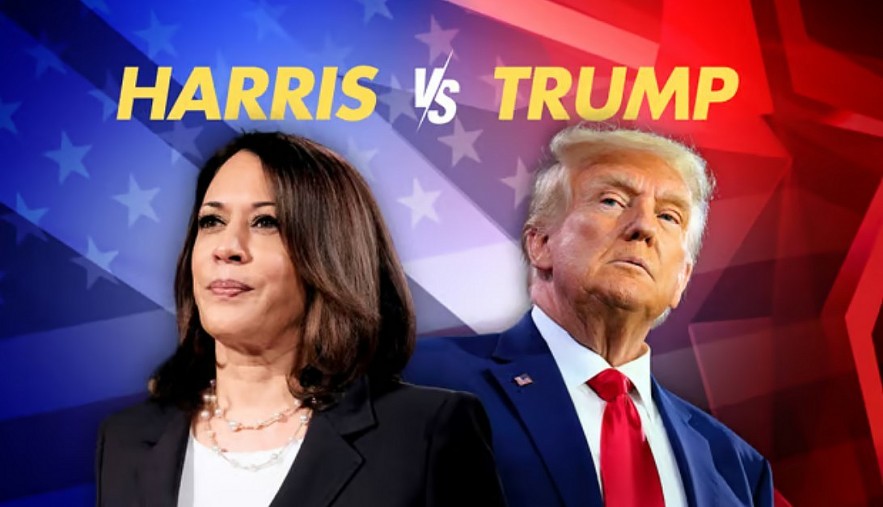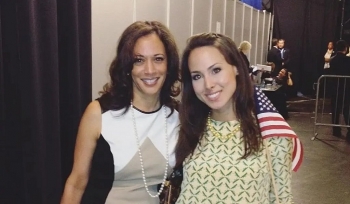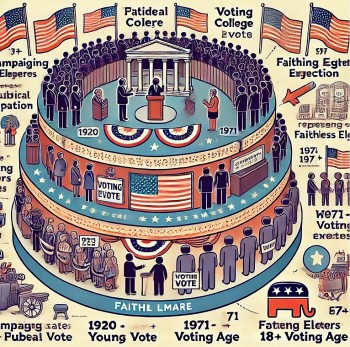Polling Hours and Time Zones for 2024
The United States spans several time zones, which means that polling hours vary across the country. The 2024 U.S. presidential election is scheduled for Tuesday, November 5, 2024. On Election Day, polling places in each state operate according to local time, with most polls opening early in the morning and closing in the evening. Here’s a general breakdown of polling hours by time zone:
Eastern Time Zone: Polls typically open between 6:00 a.m. and 7:00 a.m. and close between 7:00 p.m. and 8:00 p.m.
Central Time Zone: Polls open between 6:00 a.m. and 7:00 a.m. and close between 7:00 p.m. and 8:00 p.m.
Mountain Time Zone: Polls usually open around 7:00 a.m. and close at 7:00 p.m. or 8:00 p.m.
Pacific Time Zone: Polling stations open between 7:00 a.m. and 8:00 a.m. and close at 8:00 p.m.
Each state determines its own specific polling hours within these general timeframes. The last polling stations to close are typically in Alaska and Hawaii, extending the voting period for several more hours compared to states on the East Coast. This time zone difference affects the speed of initial projections, as media outlets and analysts wait for polling closures in each state before projecting results.
In most states, if voters are already in line when polls close, they are allowed to cast their votes. This can lead to additional time before voting officially ends, especially in high-turnout elections. The closure of polling stations across these different time zones sets the stage for when early results and projections can begin.
End of Voting on Election Day
When polls close across the country on the evening of November 5, voting technically ends. However, the process of counting votes has just begun. Each state has procedures in place to count different types of ballots—such as in-person, mail-in, and absentee ballots—each with its own timeline.
On Election Night, as soon as polls close in each state, major media networks begin reporting on preliminary results. These early numbers are often based on initial tallies from in-person voting as well as exit polls, which provide a glimpse into voter tendencies and help networks make early projections. Some states allow mail-in ballots to be processed and counted before Election Day, while others begin counting only after polls close. States like Florida and North Carolina, which allow for early counting of mail-in ballots, often have results available more quickly than states that wait until Election Day.
The end of voting does not guarantee an immediate announcement of a winner, especially in close races. States like California, with large numbers of mail-in ballots, might need more time to process all votes, especially if the election is competitive. Although the counting begins right away, the volume of ballots and the processing of provisional and mail-in votes means that the Election Night result is often a projection rather than an official announcement.
When Preliminary Results Are Available
Preliminary results are usually available on Election Night, often within hours of polls closing in each state. Media networks rely on data from in-person vote counts, early vote tallies, and exit polls to project winners. These early projections can sometimes indicate a clear winner in certain states, especially in cases where one candidate has a significant lead. In a close race, however, these projections might remain uncertain until more data from key battleground states is available.
By midnight or early the next morning, Americans typically have a preliminary idea of who might win the election. However, these results are unofficial. They are simply projections based on the counted votes up to that point. It’s important to remember that each state must verify and certify its results, which involves counting absentee ballots, mail-in ballots received on or after Election Day (in states that allow this), and provisional ballots. This process can extend the wait time before official results are known, especially in states with high numbers of absentee or mail-in voters.
Vote Counting and Certification Processes
 |
| US Presidential Election 2024 - Results Announcement |
After Election Day, states enter a formal vote-counting and certification phase. This process, often referred to as the “canvassing period,” involves verifying the accuracy of all votes. Here’s an overview of the steps taken to ensure every vote is counted:
In-Person Votes: These are generally counted first, as they are straightforward and processed quickly.
Mail-In Ballots: Depending on state laws, some states start counting mail-in ballots before Election Day, while others begin after polls close. These ballots often take longer to process because they require signature verification and, in some cases, postmark checks.
Provisional Ballots: These are ballots cast by individuals whose voter eligibility needs to be verified before their votes can be included in the final tally. Provisional ballots are counted only once officials confirm eligibility, which can take several days or weeks.
The vote-counting process varies by state. In some cases, states may finalize the count within a few days, while others take longer due to the volume of mail-in ballots. States are also bound by specific deadlines for completing the count and submitting certified results.
 Who is Meena Harris: Biography, Family, Activities And Business Who is Meena Harris: Biography, Family, Activities And Business |
Timeline for Official Certification
Each state sets its own deadline for certifying election results, often within a few weeks after Election Day. For the 2024 election, these certifications are generally expected to be completed by late November or early December. Here’s a rough timeline:
Within 1-2 Weeks Post-Election: Most states complete their initial counts, including absentee and provisional ballots, and are ready to certify results.
By December 11, 2024: Federal law requires states to resolve any disputes and certify their results by this date, known as the “safe harbor” deadline. This certification ensures that each state’s electoral votes will be counted by Congress.
December 17, 2024: The Electoral College meets to formally cast votes based on each state’s certified results.
Once each state has certified its results, the Electoral College officially votes for the President. These electors are representatives chosen based on the popular vote in each state. The certified results are then sent to Congress for the final step in the process.
Factors Affecting the Announcement of Official Results
Several factors can delay the final certification of results:
Mail-In Ballots: The verification and counting of mail-in ballots can slow down the certification process, particularly in states that accept ballots postmarked by Election Day but received afterward.
Recounts: Close races may trigger automatic recounts, depending on state laws, adding days or even weeks to the process.
Legal Challenges: Candidates or political parties may file legal challenges over certain aspects of the election, which can delay the certification process in affected states.
Final Confirmation by CongressThe final step in the U.S. presidential election process occurs on January 6, 2025, when Congress meets in a joint session to formally count the electoral votes. This session, presided over by the Vice President, confirms the President-elect based on the Electoral College votes. Once Congress has counted and verified the votes, the result is officially confirmed, and the President-elect is set to be inaugurated on January 20. |
Frequently Asked Questions (FAQ)
 |
| When will we know the winner on election day |
-
When will we know the winner on election night?
- Preliminary projections are often available on election night, but the official results take longer to confirm due to vote counting and certification requirements.
-
Why are mail-in and absentee ballots counted later?
- Mail-in ballots require additional verification steps, such as signature checks, which extend the counting timeline.
-
What happens if there’s a dispute or recount?
- In close races, recounts may occur based on state laws. Legal challenges may also arise, potentially delaying the final certification.
-
Is the Electoral College vote the final result?
- While the Electoral College casts votes in December, Congress must officially count these votes on January 6 to confirm the result.




